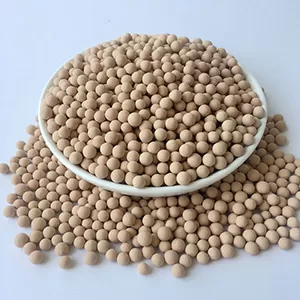Mixing lithium molecular sieve with ordinary molecular sieve risks compromising adsorption performance due to their distinct properties. Lithium sieve, designed for selective capture of small polar molecules like CO₂, has narrow pores (3–5 angstroms) and relies on lithium ions for enhanced affinity. Ordinary sieves, such as 4A or 13X, target broader substances (water, hydrocarbons) with larger, less specific pores, leading to competing adsorption when mixed.

In packed systems, the combined packing may cause uneven flow distribution. Lithium molecular sieve’s higher sensitivity to regeneration conditions (e.g., precise temperature ranges) conflicts with ordinary sieve’s tolerance for broader heating, making uniform regeneration difficult. This mismatch can leave some sieve saturated while overheating others, reducing cycle efficiency.
Industrial applications requiring both CO₂ removal and drying often use layered packing instead—lithium sieve in one section, ordinary sieve in another—preserving their individual strengths. Mixing undermines this synergy, leading to lower purity in end products and increased energy use. Thus, avoiding direct mixing ensures each molecular sieve operates optimally, maintaining process reliability.

